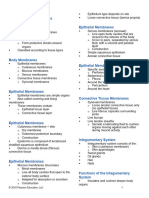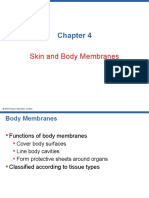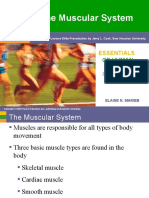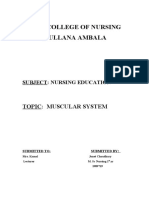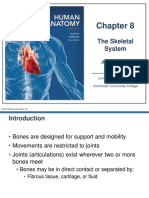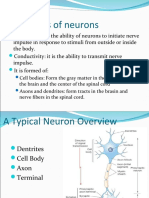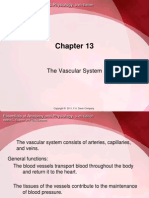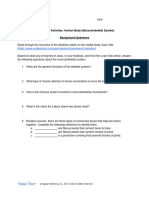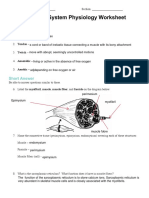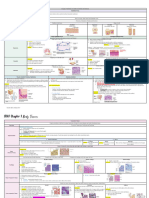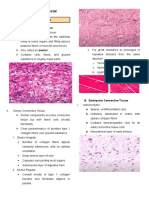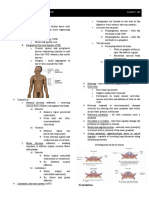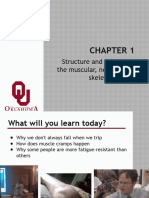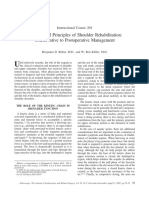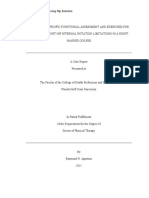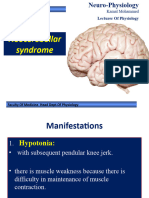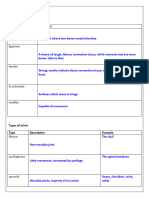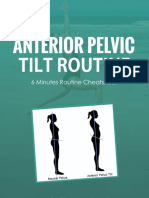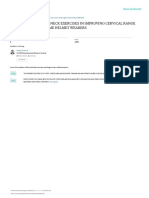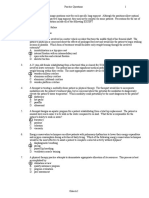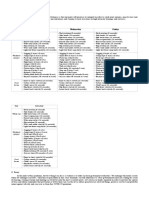0% found this document useful (0 votes)
103 views9 pages06 02LectureNotes
The document discusses the three main types of muscle in the body - skeletal, smooth and cardiac muscle. It describes their characteristics, locations and functions. Skeletal muscle is attached to bones by tendons and controls voluntary movement. Smooth muscle is involuntary and found in organs. Cardiac muscle is only located in the heart. Contraction occurs when actin and myosin filaments slide past each other, powered by ATP. Exercise strengthens and conditions muscles.
Uploaded by
samanthaCopyright
© © All Rights Reserved
We take content rights seriously. If you suspect this is your content, claim it here.
Available Formats
Download as DOC, PDF, TXT or read online on Scribd
0% found this document useful (0 votes)
103 views9 pages06 02LectureNotes
The document discusses the three main types of muscle in the body - skeletal, smooth and cardiac muscle. It describes their characteristics, locations and functions. Skeletal muscle is attached to bones by tendons and controls voluntary movement. Smooth muscle is involuntary and found in organs. Cardiac muscle is only located in the heart. Contraction occurs when actin and myosin filaments slide past each other, powered by ATP. Exercise strengthens and conditions muscles.
Uploaded by
samanthaCopyright
© © All Rights Reserved
We take content rights seriously. If you suspect this is your content, claim it here.
Available Formats
Download as DOC, PDF, TXT or read online on Scribd
/ 9

